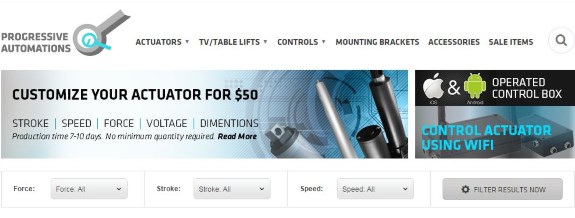The 12V actuators contain a motor that converts rotational movements into low voltage direct current to a linear motion that is used to push and pull lighter loads. The electric linear actuators have a motor, gear and a spindle together with a nut. A particular version of the 12V actuator can be built to integrate operation guidance including the control box and the control devices to enable the users have ease in operating the actuator. The operation principle of the 24V actuator in contrast uses the recliner sofa mechanism. The motor is slowed down by the gears that lead to a pair of feed screw nuts enabling it to turn rotary movements of the motor to linear reciprocating motions. By changing the lever arm length of the 24V actuator, increases the stroke ability enabling all kinds of leverage to complete the complex movements.
Application
The 12V actuators are majorly used to moving light weight loads mostly in industries to make work, as well as private life easy. The actuators are mainly used in Hospitals to move the patient’s beds, patient lifts, dental chairs, wheelchairs and baths lifts. In the industrial workstations the 12V actuators are used for ventilation, solar tracking systems, marine applications and ease kitchen movements. Conversely, the 24V actuators can be applied in both complex and simple applications. They are universally used auxiliary device drivers due to their recliner sofa mechanism. The 24V actuator is widely used in electric power machinery, metallurgy, transportation of furniture and movement of petroleum products. They are also used in chemical industries to lift heavy products.
Advantage
The 12V actuator is ideal for a broad range of activities. It is used mostly in raising, lifting, pushing, pulling, rotating, shifting and moving things in the industries. The actuators operate more efficiently, simple, quite and clean. Even though the components may wear out, the 12V actuators are very durable. The 12V actuators tend to cost more, but they can net down to be more cost effective. The advantage of the 24V actuator is that it is much more reliable in performance, quick in action, it operates smoothly with limited production of noise, and it is low in price and convenient during installation
